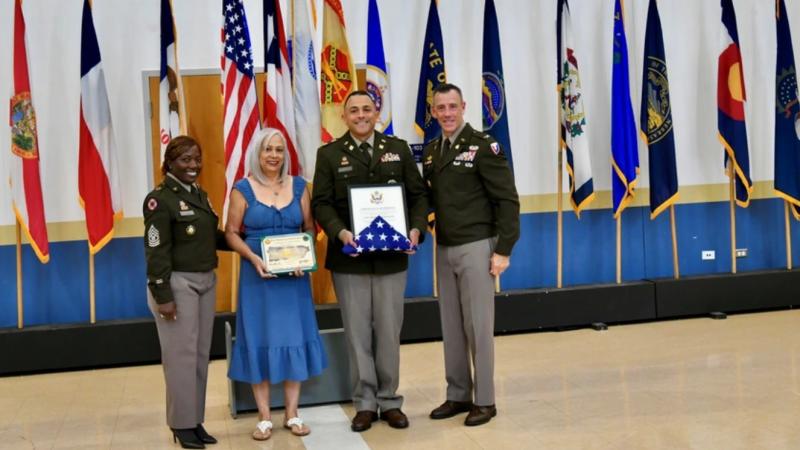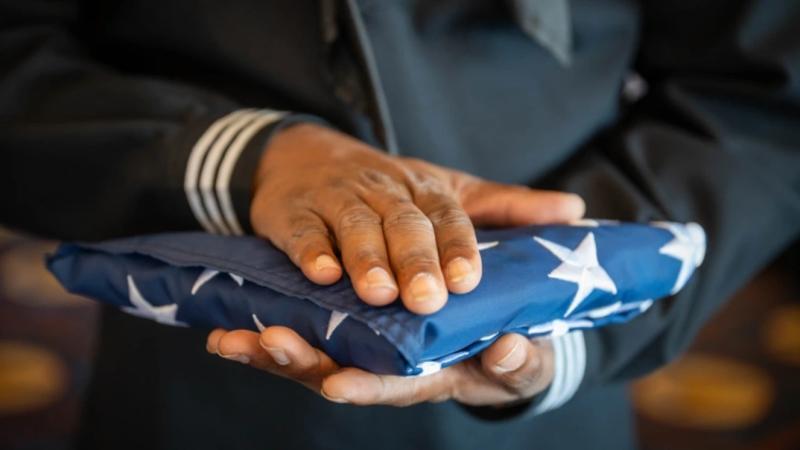CURRENT MILITARY RETIREMENT SYSTEM: ESSENTIAL GUIDE 2023

The current military retirement program has advantages for all members who serve in the armed forces, but it brings a layer of complexity that can make it challenging to understand. Whereas the previous military retirement programs required a minimum of twenty years of service and limited options for customizing benefits, the newest system includes contribution matching for all members, career bonuses, and a customizable pension plan. This guide will give you all the information you need to know to maximize your military retirement benefit.
Eligible Service Members for 2023 Military Retirement
On January 1, 2018, the military implemented a new retirement program for all new service members. Members who were serving under the previous Legacy Retirement System (LRS) were given the choice to transfer to the new retirement plan if they had less than 12 years of service.
The goal of the new retirement program was to allow members who serve less than the required twenty years to earn a pension to kick-start their retirement savings plan.

Blended Retirement System 2023: Key Features
The current military retirement program is known as the Blended Retirement System (BRS). It is made up of four main parts.
Defined Benefit
The defined benefit is similar to the previous LRS which provides members a pension upon retirement from the U.S. Armed Forces until the member dies. The change for the BRS is the way that the pension is calculated.
Where the LRS used a two and a half percent multiplier, the BRS uses two percent.
This change means that members under the LRS will receive 50% (2.5% x # of years served) of their base pay after 20 years of service, where the same number of years served will give members 40% (2.0 x # of years served) of their base pay for 20 years of service.
Both systems use the average of the base pay for the member’s last three years of service.
Government Matching
BRS also includes government matching into the federal government retirement and investment plan known as the Thrift Saving Plan.
Service members are automatically enrolled into the TSP Lifecycle (L) Fund at a rate of three percent of the members base pay. Members have the option to opt out of this enrollment, but each calendar year members are automatically re-enrolled at three percent.
After 60 days of military service, the DoD will start contributing one percent of a member's base pay. Matching does not begin until after two years of military service are completed.
After two years of service, members will continue to have one percent of their base pay put into a traditional TSP Fund regardless of if a member contributes to their TSP. However, members are able to have their contributions matched an additional 4% if they contribute 5% or more of their base pay to their TSP investments. Matching is dependent on a service member's contribution.
Member Contribution Matching Examples:
- Member contributes 0%, DoD contributes 1%
- Member contributes 1%, DoD contributes 1%
- Member contributes 2%, DoD contributes 1%, matches 1%, total 2% contribution
- Member contributes 3%, DoD contributes 1%, matches 2%, total 3% contribution
- Member contributes 4%, DoD contributes 1%, matches 3%, total 4% contribution
- Member contributes 5%, DoD contributes 1%, matches 4%, total 5% contribution
- Member contributes 5%+, DoD contributes 1%, matches 4%, total 5% contribution
An additional four percent of a members base pay can be matched if a member contributes five percent or more of their base pay into either a Roth, Traditional TSP account, or Mutual Fund.
The matching funds will always be invested in a traditional TSP fund, meaning the matching funds will not add to a member's annual income.
TSP Fund Options
The TSP offers a number of different funds depending on how a servicemember prefers to manage their investment.
- Individual funds (G, F, C, I and S) give you the option to customize your level of risk.
- Lifecycle funds (L) allow members to set it and have it automatically adjust risk-based as members grow closer to retirement.
- Roth funds are also available, and over four thousand mutual fund partners that can be invested in at a set fee.
When service members leave the military, they are able to keep the money they invested in their TSP accounts. Conversely, they can move the money to another qualifying government or private sector retirement account.
Mid-Career Bonus
Members are also eligible for a mid career bonus that can be taken with the commitment to extend their service requirement by a minimum of three years.
Mid career bonuses vary based on the needs of the military and your career field. They can range from 2.5 to 13 times a member's current base pay.
Members are able to take advantage of the career bonus any time between eight and twelve years of service. After twelve years of service, they are no longer eligible for the career bonus.
Lump Sum Option
The last benefit ties into the defined benefit. Members have the option to receive a lump sum upon retirement. There are three options for lump sum retirement:
- Members can choose not to receive a lump sum and receive their defined benefit.
- Or, they can choose either a 25% or 50% lump sum. The lump sum is calculated based on discounted present value.
- Then, members will receive either a 75% or 50% defined benefit pension until they are eligible for social security.
While the lump sum option has the potential to be a smaller benefit, there is value in getting a large lump sum of money upon retirement from service, and therefore is worth considering.
The amount could allow members to purchase a home, have a cushion when leaving the service, or can be used in a variety of other ways.

TRICARE Coverage in Military Retirement 2023
Military members who serve more than 20 years still receive medical benefits through their military retirement.
There are three healthcare coverage plans available:
- TRICARE Prime
- TRICARE Select
- US Family Health Plan (for select areas)
Once members qualify for Medicare, due to age or disability, they switch to TRICARE for Life (TFL).
TRICARE Prime
TRICARE Prime is a managed-care option available in Prime Service Areas (PSAs) for retirees under 65 who are not Medicare-eligible.
It requires annual enrollment fees and copayments. Care is coordinated through a primary care manager (PCM), often at military treatment facilities (MTFs), with priority given to active-duty members.
Enrollment must occur within 90 days of retirement to avoid coverage gaps; retroactive enrollment is possible within 12 months.
TRICARE Select
TRICARE Select is a self-managed preferred provider organization (PPO) plan available in the U.S. and overseas.
No referrals are needed for most services, but some require pre-authorization.
Retirees pay enrollment fees (for Group A retirees, those who joined before Jan. 1, 2018) and a deductible ($150 per individual, $300 per family annually). This plan offers flexibility to see any TRICARE-authorized provider.
US Family Health Plan (USFHP)
The US Family Health Plan is available in specific U.S. locations, providing comprehensive coverage through nonprofit providers.
It requires enrollment fees and copayments for retirees.
TRICARE For Life (TFL)
TRICARE for Life is for retirees and dependents aged 65 or older (or under 65 with Medicare eligibility due to disability/ESRD).
TFL acts as a Medicare supplement, covering cost-sharing (deductibles, coinsurance, and copayments) for Medicare-covered services.
There are no TFL enrollment fees, but Medicare Part B premiums (approx. $171/month in 2025) are required. Overseas, TFL is the primary payer where Medicare doesn’t apply.
There is automatic enrollment with Medicare Part A and B, and the catastrophic cap is $3,000 per family per fiscal year.
Flexibility in 2023 Military Retirement Options
The current retirement system for military members gives members flexibility, something sorely lacking from the LRS.
This new program allows members to kick start saving for retirement once their service begins, with the opportunity to begin having the government match their contributions up to five percent after two years of service.
It no longer requires service members to serve twenty years to receive a retirement benefit. It also gives members an opportunity to extend their service with a bonus midway through their journey to the twenty year pension while still giving members flexibility to leave the service before they reach the defined benefit option.
Lastly, the military offers flexibility to members on how they receive their defined benefit based on their needs and lifestyle.

Blended Retirement System FAQs 2023
Why Did the Military Retirement System Change?
BRS had two main goals.
First, it wanted to offer service members more flexibility when it came to retirement. Especially by providing a retirement benefit for those who serve less than twenty years.
The second goal was to manage the long term cost of the retirement program and reduce them.
How Long Will the Defense Department Match My Contributions?
Department of Defense matching ends the last month of a servicemember's service to the DoD or at the end of 26 years of military service.
If I’m in the Blended System and Retire After 20 Years, Will I Still Get an Annuity?
The Annuity for BRS starts directly after retirement, just like the Legacy Retirement.
The primary change is the percent multiplier went from 2.5% to 2.0% per year of base pay. Now members who serve 20 years receive 40% of base pay (2.0% x 20 years), the old system gave members 50% (2.5% x 20 years).
Members under BRS also have the option to take a lump sum at retirement of 25% or 50% in exchange for lower pension benefits.
Can I opt out of the Blended Retirement System?
Members who chose to switch to BRS before January 2018 can not switch back to the Legacy Retirement System.
Members who join after 2018 are automatically enrolled into BRS.
Will my continuation pay be taxed?
Yes, continuation pay is taxed.
It can be put in your TSP but you will still be limited to caps for TSP contribution for that year.
Is my military annuity taxed?
Yes, military annuity is taxed at the federal and state level.
Some states offer tax exemptions for military annuity but this varies state to state.
Military disability compensation that is based on disability rating can sometimes be included in a military annuity that amount that makes up disability is not taxed.
Is it better to take the lump sum or the full monthly retirement?
Unfortunately, there isn’t one right answer.
For every person, various factors play into deciding what the best option is. Overall, the amount of money you receive could be higher when receiving the COLA adjustments over the life of a non discounted military annuity.
Alternatively, a large amount of cash directly after leaving the service could give a member the opportunity to use that money in an investment, delay their next job, a down payment for a large purchase, a way to pay off debt, or some other financial choice.
Each member must decide what the best option is for themselves and their family.
How is the Lump Sum taxed?
Lump sum benefits are taxed as regular income. It can be put in your TSP but you will still be limited to caps for TSP contribution for that year. Some states may offer tax exemptions but this varies.
How do the changes in the military retirement system benefit the DoD?
Having a Blended Retirement System can help the DoD with recruitment efforts. Both to encourage members to join and to retain members.
Only 20% of service members reached retirement and were able to take advantage of the Legacy Retirement System. Now, all members can receive retirement benefits.
While the second goal of BRS was to reduce overall costs to the Retirement Program, it is too early to tell the full impact.
All members who are retiring (2025) are still under the Legacy System and the primary cost saving is the reduced annuity benefit. Without seeing that cost saving, it is hard to see the financial impacts.
Suggested reads:
BY AMANDA HUFFMAN
Air Force Veteran & Military Women Advocate at VeteranLife
Air Force Veteran
Amanda is an Air Force Veteran and Space Force spouse. She shares the stories of military women on her podcast, Women of the Military and is working to inspire the next generation of girls to join the military through her book A Girl's Guide to Military Service.
Credentials
Expertise
Amanda is an Air Force Veteran and Space Force spouse. She shares the stories of military women on her podcast, Women of the Military and is working to inspire the next generation of girls to join the military through her book A Girl's Guide to Military Service.



